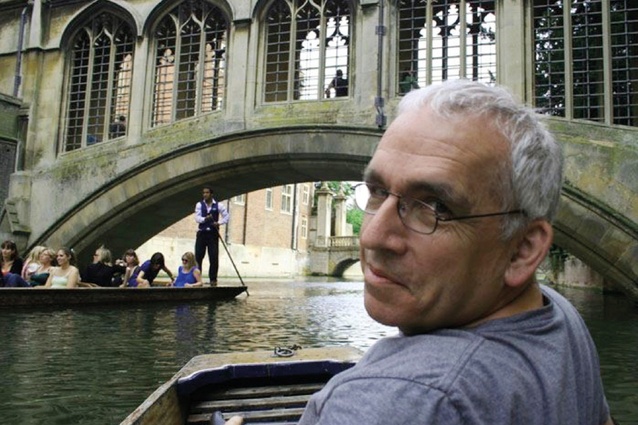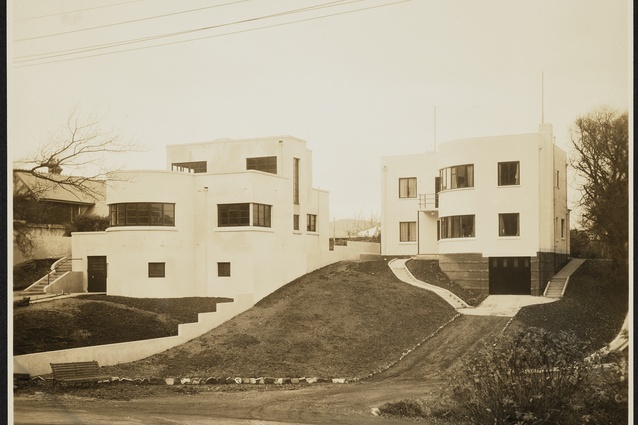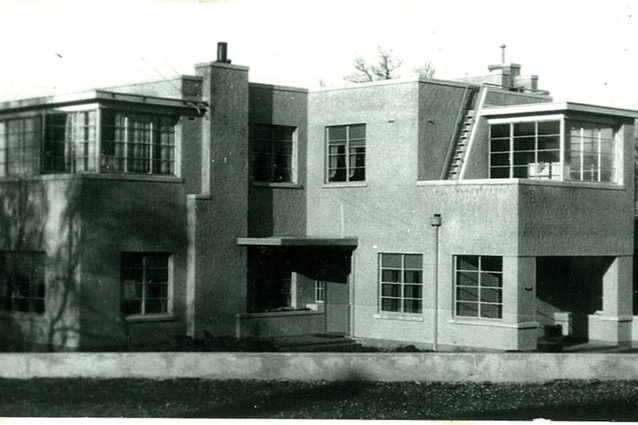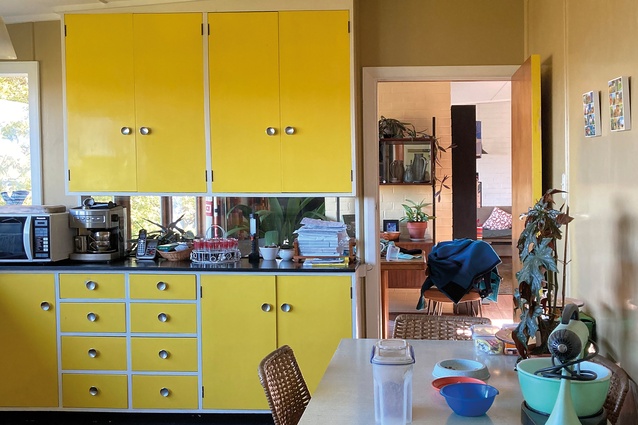Forever an educator
Visiting Dunedin last month, a friend asked whether or not I knew the somewhat nondescript Maritime Building on Crawford Street – the one with the easily missed Māori relief panels on its façade. I was able to reply that, decades earlier, Michael Findlay had pointed it out and, what’s more, he had suggested some possible design sources.
During a relatively short visit, this was just one of many conversations where Michael’s name came up. Four years after his death, repeated mention of his work and observations emphasised what a loss this has been, and how his shared understandings continue to contribute to the cultural life of the south.
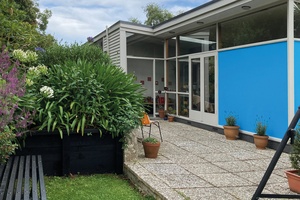
In 1989, Michael and his family — garden expert Alice with children Matthew and Bryony — moved to Dunedin where he had taken a position of Collections Curator at the Otago Settlers Museum (now Toitū Otago Settlers Museum). He had been the Historic Research Officer at the Onehunga Borough Council and, before that, was on the curatorial team at the Auckland Institute and Museum. In Māngere, ahead of their time, they had lived in a deco house, complete with period furniture. He was already enthusiastic for the modern and the moderne and, in Auckland, he was able to frequent the university’s Architecture Library, where open shelves offered easy access to the Architects’ Journal, to The Architectural Review and to that bastion of modernity through the 1930s and ’40s, The Architect & Building News.
Such was his interest for the architecture of the mid-century that he sought out key informants: people such as Max Rosenfeld, the ‘Home Architect’ of The Weekly News (and, for a time, the bane of the NZIA membership), who, through the 1950s and 1960s, had regularly published affordable, ready-to-go house plans. His further enthusiasm for New Zealand’s contribution to global modernism prompted him to seek out the brother of the modernist architect Amyas Connell. His passion for the logic and clarity of the work of Connell, Ward and Lucas, and for their fundamental importance to the development of modernism in Britain, became a lifelong interest that culminated in a profoundly satisfying field trip to Britain. Connell’s Y-plan house, High and Over, in Buckinghamshire, was a recurring topic, becoming the subject of his master’s thesis in 2011.
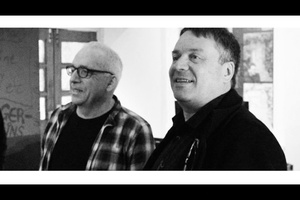
At Toitū, Michael worked on exhibitions, and — along with staff from the Otago Museum and the Dunedin Public Art Gallery — curated the triumphant Southern Lights: 150 years of Otago Landscape Art that eventually travelled to Edinburgh. Substantial knowledge coupled with his easy and enthusiastic manner enabled fruitful collaboration with institutions, both locally and abroad. Later, he would work on exhibitions of diverse subjects, such as architecture, modernist publications, design, motoring, Dunedin music and beyond, notably including in 1996 The Sound of Dunedin exhibition and his final show, Things Change: Martin Phillipps and The Chills of 2018.
Michael’s modus operandi was one of discovery and dissemination. He found meaning in objects, both the exceptional and the everyday. Talks and articles celebrated many of the showpieces at Toitū. Louis John Godfrey’s carved banking desk for the BNZ, Ralph Thompson’s caravan from the late 1940s, an early electric Shacklock stove and a locally made black-and-white TV set were some of the objects he interpreted to an audience eager to understand more. Michael also introduced mid-century furniture to many. He was quick to recommend purchases of quality Scandinavian, American, British and New Zealand-made furniture — then going for a song — in the town’s once numerous second-hand stores. It was almost as if the homes of his friends were another field for curation.

Similarly, his own ceramics collection presented a carefully curated narrative on aesthetics and the development of mid-century design. Jessie Tait’s work for Midwinter Pottery, post-war Schramberg from Germany and some impressive pieces by Frank Carpay were rapturously discussed with guests welcomed to his and Alice’s Port Chalmers home. Designed by Dunedin architect Bob Middleditch in 1959, their faithfully preserved house was yet another surprise discovery, warmly shared with friends and visitors. He was excited by technology and good design, which helps explain his prize possession: a lovingly maintained 1971 Alfa Romeo GTV. Once, he recounted an early memory of the thrill he felt when he realised that a car’s speedometer arm moved analogously with the speed of the vehicle. That excitement never waned.
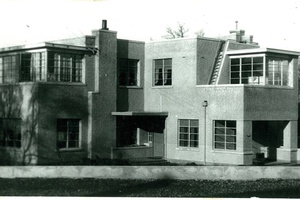
Michael was forever an educator, and I learned much through his observations, for which I am very grateful. Wanting people to better understand design, he spoke to audiences large and small, academic and secular. Fortunate visitors from the north could sometimes be taken on exclusive tours of 1930s’ domestic architecture as Michael argued that the supposed lengthy time lag between advances in modernism abroad and work in New Zealand was, in some cases, a fiction. Arthur Salmond’s Sidey House and homes by Frank von Sturmer and Miller & White were cited as clear evidence. Along with a deep appreciation for ‘the Victorian City’, Michael celebrated its 20th-century manifestation and its associated personalities.
Alongside projects by Salmond et al., he championed the work of Henry McDowell Smith, John Allingham, Bill Hesson of the Dunedin City Council and Ted McCoy. While these people were mostly deceased, he spoke of them as though they were familiar friends, known to everyone in the room. While others may have wanted to demolish Salmond’s seven-storey State Insurance building at the Exchange, Michael expressed a desire to see its earlier constructivist lettering restored and illuminated along its parapet. He warmed to Dunedin’s optimism for growth in the sixties.
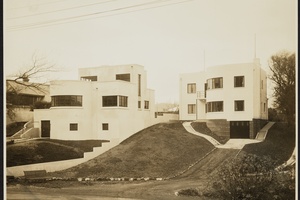
When he left Toitū, Michael joined the University of Otago’s Department of Applied Sciences and, later, lectured at the Otago Polytechnic. He was a valued authority on heritage and on contemporary architecture, participating on advisory and award panels, and was the regional coordinator for DOCOMOMO. He wrote many research articles and reviews, often in the publications of Heritage New Zealand and in this present journal. His well-researched trenchant observations have significantly shaped our understanding of the country’s built fabric, to the extent that, now, they are often repeated as unattributed, well-established fact.
His enthusiasm for design was infectious and he gave many people insight into the value of their regional environment. His work for Project Maniototo that celebrated Ranfurly deco, and his documentation of the architecture of the south — including promoting the work of Lew Simpson in Invercargill — helped people understand their oftentaken- for-granted world. His 2006 essay in Murihiku: The Southland Story remains the most thorough account of the architecture of that region to date.
Michael had a great gift for friendship, with time for everyone and for every task. Guests were always welcome. His generous commentary, both oral and written, was always clear and perceptive, and invited you to look again, and — above all — to look more closely. Those who knew and learned from him are very fortunate indeed.


